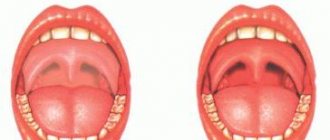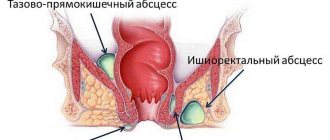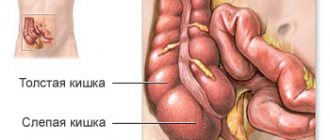Causes of nystagmus
Synchronous eye movements are controlled by the brain. The main cause of nystagmus is the unstable functioning of the oculomotor system.
Among the main causes of nystagmus are:
- hereditary factor;
- damage to the brain or its membranes;
- negative impact on the nervous system that arose during childbirth;
- various vision disorders: farsightedness, astigmatism, myopia;
- atrophy begins in the area of the optic nerve;
- dystrophic processes that affect the retinal area;
- Meniere's disease (pathology associated with the inner ear), as well as other infectious or inflammatory processes of the middle or inner ear;
- the use of certain medications, as a result of which nystagmus appears as a side effect;
- tumor damage to the skull, brain tissue or its membranes;
- albinism (disturbed pigmentation process in the body);
- different types of stroke (disruption of the blood supply to the brain);
- multiple sclerosis (neurological disease);
- constant stress;
- taking alcoholic beverages, narcotic and psychotropic drugs.
{banner_gorizontalnyy2}
Sometimes the manifestation of nystagmus occurs as a result of exposure to external factors. In this case, it is not a pathology. For example, specific nystagmoid rotation of the eyes can occur as a result of severe overstrain of the nervous system. This manifestation is possible due to disorientation, which arose due to the rotation of the body along an axis (riding on a carousel). Streams of scattered impulses enter the brain, and it is briefly lost, which provokes nystagmus.
When the body returns to its normal position, the nystagmus stops. If involuntary rotation of the eyes occurs in a calm state, this indicates that the nervous system is influenced by negative factors.
Pathogenesis
Involuntary eye movements are based on decompensation of the tone of the membranous part of the labyrinth of the inner ear. In a normal state, nerve impulses are generated synchronously on both sides and transmitted at the same speed, which ensures the position of the eyes in a state of rest, and when moving, the organs can move synchronously. An increase in tone in the labyrinth of the inner ear on one side leads to desynchronization and the development of nystagmus.
In the case of damage to the peripheral and central parts of the vestibular analyzer, the emergence or change of clinical manifestations may be noted when the position changes. This is due to the secondary involvement of the semicircular tubules in the process of pathology.
The molecular mechanism of progression of congenital idiopathic nystagmus is currently not fully understood. Doctors suggest that the FRMD7 gene, or rather its mutation, inherited in an X-linked manner, is to blame. On the other hand, in clinical practice, cases of autosomal recessive and autosomal dominant inheritance are often observed.
Horizontal nystagmus
With horizontal nystagmus, rhythmic eye movements occur to the left and right sides, which the patient cannot stop. This pathology is not life-threatening. Correction occurs with the help of medications or surgery. With horizontal nystagmus, the amplitude of eye oscillation is insignificant: no more than 2.5 mm.
A person cannot stop horizontal eye twitching by force of will. Movements become less noticeable if the patient takes a certain position or tilts or turns his head in a certain way. Also, along with the pathology, visual acuity decreases, since it is difficult for a person to focus his gaze on any object.
The patient does not feel any discomfort with this type of disease. However, often horizontal nystagmus occurs with mixed form of astigmatism, then pain in the head and pain in the eyes may appear.
Horizontal nystagmus is divided into subtypes:
- dissociated: eye movements occur differently, the frequency and amplitude of one eye does not correspond to the frequency and amplitude of the other;
- pendulum: both eyes oscillate with the same frequency and speed;
- associated: eye vibrations occur in a jerky manner. Eye movements occur with the same amplitude;
- jerky: movements in one direction occur faster than in the other;
- with a rotatory component: the eyes move around the sagittal axis;
- mixed: includes pendulum-like and jerk-like appearance.
Nodule spasm
An extremely rare disease that develops in a child between 3 and 18 months of age. Its causes are associated with pathologies such as empty sella syndrome, glioma of the anterior optic pathway, porencephalic cyst, etc. If the cause of the disease is not established, it is considered idiopathic and often disappears by the age of 3 years.
The symptom complex includes:
- horizontal nystagmus with small amplitude, high frequency, on one or both sides, accompanying head nodding;
- asymmetrical nystagmus, the amplitude of which increases when the gaze is averted;
- addition of nystagmus with vertical, torsional components.
Spontaneous nystagmus
Spontaneous nystagmus is a consequence of problems in the brain or inner ear. It has several directions:
- horizontal;
- vertical;
- rotational;
- Converging.
Spontaneous nystagmus can be congenital or acquired. Spontaneous nystagmus is detected by a neurologist during a routine examination, during which no additional influences are applied to the patient’s vestibular apparatus to cause an experimental type of nystagmus. During such an inspection, the following actions are performed:
- the doctor and the patient are positioned so that their eyes are approximately at the same level;
- a light source is directed to the patient’s eyes;
- the doctor asks the patient to concentrate his gaze on an object that is located at a distance of approximately 30 cm;
- the doctor begins to move the object up, down, in different directions and diagonally. At this time, the patient should follow the doctor’s movements with his eyes;
- The doctor observes how the patient’s eyes move and records possible manifestations of nystagmus.
The spontaneous appearance has several degrees:
- I degree: its manifestation occurs when looking towards the rapid phase of the disease;
- II degree: the disease appears with direct gaze;
- III degree: the manifestation of the disease occurs when looking towards the slow phase of the disease.
{banner_horizontalnyy}
Diagnostics
How to test nystagmus? To diagnose pathology, first of all, the ophthalmologist listens in detail to the patient’s complaints and collects a detailed anamnesis. After this, an external examination is performed, and the following diagnostic studies are prescribed:
- visometry – assessment of visual acuity;
- refractometry – setting the type of clinical refraction;
- electronystagmography – identifying the direction and severity of nystagmus;
- microperimetry - determining the point of fixation on the shell of the eyeball, studying the sensitivity of the retina.
Read in a separate article: Horizontal nystagmus: what it is, causes, symptoms and treatment
To identify the cause of the deviation, the following diagnostic methods may be prescribed:
- CT or MRI of the head - allows you to detect structural changes in the brain;
- toxicological blood test - determines signs of intoxication of the body;
- electroencephalogram;
- echo-encephalogram.
You should definitely consult a neurologist. Sometimes it is necessary to undergo an examination by a neurosurgeon.
Vestibular nystagmus
Vestibular nystagmus is characterized by rhythmic oscillations of the eyes, which consist of rapid twitching and slow movement of the eyes in the other direction. With this type of nystagmus, the eyeball swings in one direction or the other in the horizontal plane. The rapid twitching of the eyes is more noticeable to the observer.
Vestibular nystagmus occurs due to an imbalance in the balance between impulses that come from the semicircular canals.
The patient feels dizzy when making involuntary movements with his eyes. The manifestation of the disease decreases if the head is fixed, and increases if the position of the head changes. Vestibular nystagmus can be:
- horizontal-rotational;
- vertical-rotational.
Vestibular nystagmus can occur with direct gaze or with intentional eye movements. Nystagmus, which manifests itself with direct gaze, can be directed:
- down: lesions of the posterior cranial fossa, cerebellar atrophy and others;
- up: damage to the oral part of the cerebellar vermis or pathologies arising in the brain stem.
General information
Nystagmus is a fairly common nosology in the practice of modern ophthalmology. According to world statistics, the congenital form of the pathology is diagnosed in 20-40% of visually impaired children. Often, it is possible to establish the etiology of involuntary eye movements.
The idiopathic type is observed with a frequency of 1:3000. The disease in the form of horizontal nystagmus is more common, while oblique and rotational nystagmus are quite rare. In the general statistics of eye diseases, horizontal nystagmus occupies 18%. Geographically, there is no epidemiology.
Rotatory nystagmus
With rotatory nystagmus, the eyeballs make rotational movements in a circle. It appears as a result of damage to the vestibular system.
The occurrence of this type of nystagmus is possible with artificially created stimulation:
- penetration of cold water into the ear from the right side causes nystagmus on the left side;
- penetration of warm water into the ear on the left side provokes the manifestation of the disease on the right side;
- If cold water penetrates immediately into the ears on both sides, then a jerky type nystagmus occurs, which is characterized by a fast upward phase. Warm water provokes disease with a rapid downward phase.
How can an ophthalmologist help?
Treatment of abnormal conditions of the organs of vision is a pressing and rather painful issue both for the patients themselves and for specialists in the field of ophthalmology.
On the other hand, treatment of a pathological condition, especially when it concerns the organs of vision, will achieve some improvement. It is for this reason that most people make the decision accordingly, even though the treatment of this visual disease is not a cheap “pleasure”.
The ophthalmologist's strategy also depends on what exactly was the root cause of this condition.
Features of surgery
If the doctor makes a decision regarding surgical treatment of horizontal nystagmus, then the following goals should be set:
- Decreased frequency of nystagmus.
- Decreased amplitude of nystagmus.
- Blocking.
Another important task of surgical intervention is to change the motor force of the muscles that move the human eyes. This is explained by the need to stop specific twitches
Thanks to this tactic, the ophthalmologist is able to successfully block the anomaly or reduce the amplitude and frequency of characteristic eye movements.
Features of therapeutic intervention
Most often, the ophthalmologist makes a decision regarding the therapeutic treatment of the pathological condition. The goal of treatment in this case should be considered to improve visual acuity. the method is also used to actively stimulate the function of the main structures inside the organs of vision.
Thanks to this method, the doctor is able to provide the patient with a much clearer gaze fixation.
In addition, the doctor prescribes measures aimed at restoring normal binocular vision.
Particular attention should be paid to congenital horizontal nystagmus. Many ophthalmologists are of the opinion that treatment of this condition should be carried out when the patient is in early preschool age
You should not wait until your child is three years old. This tactic is not justified.
Congenital nystagmus
In the congenital form, the pathology manifests itself from birth.
Its development is caused by damage to the subcortical formations of the brain. Visual acuity in this type of disease is very low. It is influenced by the range and frequency of movements of the eyeballs, which occur involuntarily. Nystagmus, which appears from birth, is accompanied by other pathologies of the visual system:
- fundus changes;
- optic nerve atrophy;
- functional visual impairment.
The main causes of nystagmus from birth include:
- developmental delay in the womb;
- premature baby;
- injuries received during childbirth.
The manifestation of congenital nystagmus in children does not occur immediately, but in the second or third month of life. This is due to the fact that newborns' eyes are not fully developed and they cannot focus their gaze on any object. As the baby approaches one month, such problems disappear and the baby learns to follow the movement of one object.
{banner_horizontalnyy3}
Prognosis and prevention
With proper treatment and compliance with doctor's orders, the prognosis for the restoration of visual functions is very favorable. Corrective therapy of the underlying disease ensures elimination of the clinical manifestations of the pathology. But specific, preventative prevention has not currently been developed. Nonspecific preventive measures include timely diagnosis and treatment of brain pathologies, treatment of the vestibular system and, specifically, the organs of vision.
When detecting involuntary eye movements in a patient who has taken anticonvulsants or sleeping pills, it is necessary to adjust the dosage of the drugs.
Vertical nystagmus
With vertical nystagmus, the eyes involuntarily move in an up and down direction. Its manifestation can occur in two ways:
- according to the pendulum-like appearance: the amplitude of eye movement up and down is the same;
- according to the jerky appearance: the eyes move quickly up and return down slowly, or vice versa.
Vertical nystagmus can be of two types:
- isolated: oscillatory movements occur only in one eye;
- friendly: movements are made equally by both eyes.
In the case of a combination of a vertical form of the disease with a horizontal or rotational form, they speak of a mixed form of the disease.
Depending on the amplitude of eye movement, vertical nystagmus can be:
- small-caliber: deflection angle less than 5 degrees;
- medium-caliber: deviation ranges from 5 to 15 g;
- large-caliber: deviation is more than 15 g.
Complications
A common complication of this disease is secondary alternating converging strabismus, which often develops in patients with the dissociated form. The characteristics of strabismus are also determined by the course of the disease. The pathology may be accompanied by amblyopia and mixed astigmatism. The acquired disease is complicated by a number of serious vestibular disorders, such as dizziness, problems with coordination, and headache. Due to the extreme need to constantly hold the head in one position, pinching of the cervical vertebrae may occur.
Treatment of nystagmus
Treatment for nystagmus depends on the form of the disease and how severe its symptoms are. The following methods are used to eliminate the disease:
Conservative therapy
It is used if the disease occurs due to central vestibulopathy. Neurotropic drugs belonging to the group of antiepileptic and anticonvulsants are used as treatment.
Surgical method
The purpose of the operation is to create relative rest of the eyes by restoring the physiological position. The structural characteristics of the extraocular muscles change. For symptomatic treatment, glasses or contact vision correction are used. It is recommended to use contact lenses, since when you move your eyes, the center of the lens moves with it and visual dysfunction does not develop. Botox is sometimes injected into the orbital cavity to limit small eye movements.
Medicines
Photo: slavikap.livejournal.com
Neurotropic drugs are divided into two main groups:
- Drugs that affect afferent innervation, through which nerve impulses are transmitted from internal organs and tissues to the central nervous system;
- Means that affect efferent innervation, through which excitation is transmitted from the central nervous system to internal organs and tissues.
The choice of a specific drug depends on the form of nystagmus and the cause of its occurrence.
Vasodilators include drugs whose mechanism of action is to relax the smooth muscles of blood vessels, which leads to the expansion of their lumen. Myotropic drugs act directly on the muscular elements of the vascular wall. Neurotropic drugs achieve a vasodilating effect due to their influence on the nervous regulation of blood vessel tone.
Vitamin-mineral complexes contain all the vitamins and minerals necessary for the normal functioning of the body. When choosing a vitamin-mineral complex, it is worth considering the gender, age and health status of the patient.
Nystagmus in cats
Nystagmus in cats can also be acquired or appear from birth.
The congenital form appears only in the Siamese breed. An acquired type of nystagmus may be due to any injury or disease that affects the animal’s nervous system. Factors causing this disease in cats include:
- albinism: there is a pathology associated with retinal pigmentation, which negatively affects vision;
- eye diseases: cataracts, glaucoma, keratitis;
- inflammatory processes in the inner ear;
- brain damage;
- a side effect of taking certain neurological drugs.
Sometimes a kitten is born with a swan neck and has nystagmus. This disease manifests itself from 4 months to a year. As a rule, it goes away spontaneously.
There is no specific treatment for nystagmus in cats. If the disease is acquired as a result of injury or another illness, then it is only possible to reduce the disease by taking appropriate medications. No treatment should be carried out in albinos and Siamese cats, since the manifestation of nystagmus in them is a physiological phenomenon. The disease does not cause them any harm.
Risk group
The risk groups include the following categories of patients:
- children born from parents with serious eye diseases;
- infants whose mothers suffered a severe infection during pregnancy that penetrated the placenta;
- patients who have suffered mechanical damage, serious injuries to the organs of vision;
- persons with a history of progressive cataracts;
- persons with progressive decrease in visual acuity.
These categories of patients need to be periodically examined by a doctor to prevent the development of the disease and its complications.











